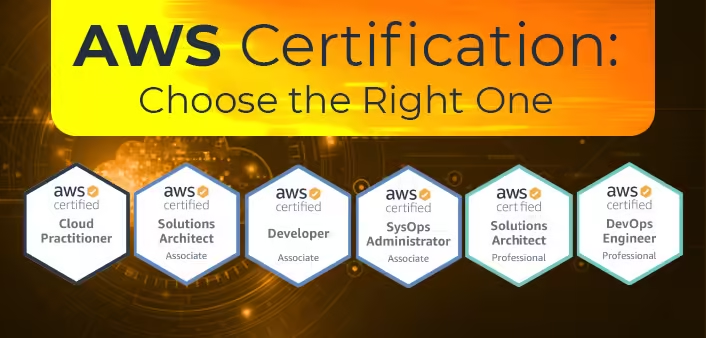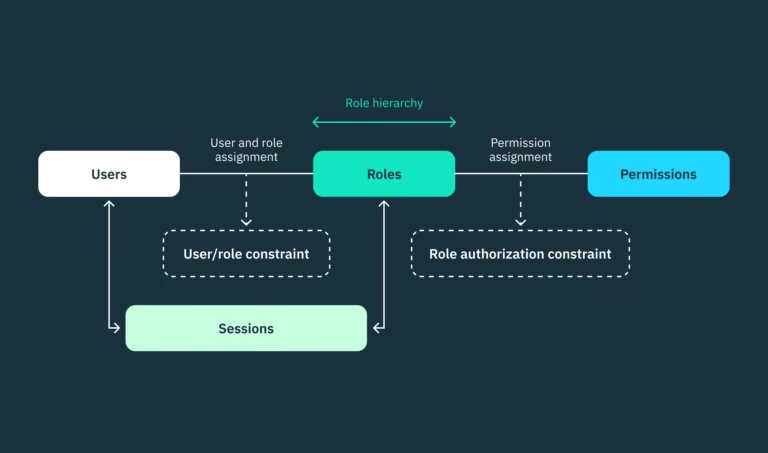
Introduction to Cloud Architecture
Cloud architecture refers to the components and services that are necessary to deliver cloud computing, a model that allows on-demand access to a shared pool of configurable resources. A cloud architect is responsible for designing and managing these structures and oversees the implementation of cloud services within an organization. This role has gained significant importance, especially as businesses increasingly rely on cloud solutions to enhance their operations and drive digital transformation.
In recent years, the demand for cloud architects has surged as organizations strive to migrate their technology infrastructure to the cloud. This shift is often motivated by the need for scalability, improved performance, cost efficiency, and enhanced collaboration. Cloud architects play a critical role in navigating these transitions, utilizing their expertise to develop frameworks that align with business objectives while ensuring security and compliance in a multi-cloud environment.
Cloud architects are not merely builders; they serve as strategic advisors and project managers who engage with various stakeholders throughout the organization. Their responsibilities encompass evaluating existing systems, identifying the appropriate cloud services, and orchestrating the integration of on-premises and cloud resources. As they forge partnerships with cloud service providers, they ensure businesses leverage the best tools and technologies tailored to their unique needs.
Moreover, as organizations continue to embrace digital transformation, cloud solutions have become indispensable for maintaining competitive advantage. This evolution has led to a growing recognition of the invaluable contributions cloud architects make to operational efficiency and innovation. By overseeing the architectural design and deployment of cloud-based solutions, these professionals ensure that organizations can adapt swiftly to evolving market demands and technological advancements.
What is a Cloud Architect?
A Cloud Architect is a technical expert responsible for overseeing an organization’s cloud computing strategy. This includes everything from cloud application design and cloud management to monitoring and data storage. A Cloud Architect works closely with IT teams to ensure that cloud infrastructures are properly aligned with business goals, while also providing a safe and efficient environment for applications and data.
Understanding the Key Roles of a Cloud Architect
A cloud architect plays a pivotal role in the planning, design, and management of an organization’s cloud computing strategy. One of the primary responsibilities is to architect robust cloud infrastructures that align with business requirements. This includes evaluating existing systems and determining appropriate cloud solutions that ensure efficiency, scalability, and reliability. A cloud architect must also account for various deployment models—public, private, and hybrid clouds—to select the best fit for the organization’s needs.
Beyond infrastructure, ensuring cloud security is a critical duty. Cloud architects implement rigorous security protocols to protect sensitive data and comply with industry standards and regulations. This involves overseeing encryption strategies, identity access management, and secure application development lifecycles. They must regularly assess and mitigate risks that could jeopardize data integrity or availability, thus ensuring the organization remains resilient against potential cyber threats.
In addition to these technical competencies, cloud architects serve as liaisons between different stakeholders within an organization. They collaborate closely with development teams, operations staff, and upper management to ensure everyone is aligned with cloud initiatives. By guiding these groups on cloud best practices and operational procedures, cloud architects facilitate smoother transitions to cloud environments and enhance overall productivity.
Moreover, they contribute significantly to the strategic goals of an organization. Through assessing current technological landscapes and forecasting future cloud trends, cloud architects help organizations remain competitive. Their insights inform decisions that lead to optimized resource allocation, cost savings, and improved service delivery. In their multifaceted role, cloud architects not only create technical blueprints but also shape the cloud strategy, impacting the organization’s long-term vision.
Key Responsibilities of a Cloud Architect
The job of a Cloud Architect is multi-faceted, and their responsibilities include:
- Cloud Architecture Design: Cloud Architects design and plan the architecture of cloud systems. This includes selecting the right cloud services (IaaS, PaaS, SaaS) and integrating them into the organization’s existing system.
- Technology Stack Management: They are responsible for selecting cloud technologies and ensuring they integrate well with other systems. This could include selecting storage systems, databases, security frameworks, and monitoring tools.
- Scalability and Performance Optimization: A Cloud Architect ensures that cloud solutions are scalable and can handle increased loads without performance issues. They also optimize the cloud environment for cost efficiency.
- Security & Compliance: Cloud Architects develop policies and procedures to maintain a secure cloud environment. They ensure compliance with regulations, such as GDPR, HIPAA, and others, depending on the organization’s needs.
- Collaboration: They work closely with developers, IT teams, and other stakeholders to implement cloud solutions that meet business objectives.
- Cost Management: A major part of the job is managing costs by choosing the most cost-effective cloud solutions and optimizing existing ones.
- Disaster Recovery Planning: Cloud Architects develop disaster recovery plans to protect data and ensure that systems can be restored quickly in case of an outage or attack.
Essential Skills for Cloud Architects
As the adoption of cloud computing continues to expand across various industries, the role of a cloud architect becomes increasingly vital. To excel in this position, one must possess a blend of technical and soft skills that align with the evolving landscape of cloud services. Strong technical skills encompass a comprehensive understanding of cloud computing platforms such as Amazon Web Services (AWS), Microsoft Azure, and Google Cloud Platform (GCP). Familiarity with these platforms enables cloud architects to design and implement scalable, cost-effective solutions tailored to an organization’s needs.
Additionally, proficiency in networking is essential. An in-depth knowledge of networking principles, including virtual private clouds (VPCs), firewalls, and load balancers, is critical for effectively managing cloud environments. Programming skills also play a crucial role; familiarity with languages such as Python, Java, or Ruby allows cloud architects to automate processes, create scripts, and facilitate integrations with various services. Furthermore, understanding DevOps practices enhances an architect’s capability to streamline development and operations, resulting in improved efficiency and collaboration.
Equally important are the soft skills required to thrive as a cloud architect. Effective communication skills enable architects to articulate complex technical concepts to stakeholders and collaborate with teams across different disciplines. Strong problem-solving abilities help in identifying potential challenges and devising innovative solutions that align with business objectives. The capacity for critical thinking is invaluable, especially when faced with rapid technological changes.
Continuous learning is paramount in this field, as cloud technologies are constantly evolving. Pursuing certifications from reputable providers, such as AWS Certified Solutions Architect or Microsoft Certified: Azure Solutions Architect Expert, can validate expertise and showcase a commitment to professional development. Staying informed of emerging trends and advancements through online courses, workshops, or industry conferences is essential for maintaining relevance and effectiveness in the role of a cloud architect.

Skills Required to Become a Cloud Architect
To excel as a Cloud Architect, you need a combination of technical expertise and soft skills. Here are the key skills for success:
- Cloud Platforms Knowledge: Expertise in cloud platforms like AWS (Amazon Web Services), Microsoft Azure, Google Cloud, or IBM Cloud is critical. Each platform has its architecture, so familiarity with their services, such as EC2, S3, Lambda, Azure VMs, and GCP Compute Engine, is essential.
- Networking: A deep understanding of virtual networks, DNS, VPN, and firewalls is crucial for designing cloud architectures.
- Security & Compliance: Knowing how to implement robust security measures, such as encryption, identity and access management (IAM), and compliance with regulatory frameworks, is a must.
- Programming Skills: Familiarity with programming languages like Python, Java, Ruby, and C++ helps in automating and integrating cloud services.
- DevOps & Automation: Understanding the principles of DevOps and automation tools like Ansible, Terraform, Docker, and Kubernetes helps Cloud Architects manage infrastructure as code (IaC).
- Database Management: Knowledge of cloud-based databases (SQL, NoSQL, relational, non-relational) is important, as Cloud Architects often design cloud storage solutions for data management.
- Project Management: Cloud Architects often lead teams and work on multiple projects. Project management skills, understanding of Agile and Scrum methodologies, and the ability to communicate effectively are key to success.
- Soft Skills: Strong leadership, communication, problem-solving, and collaboration skills are equally important to navigate complex projects and manage stakeholder expectations.
Cloud Architect Career Path
The career path of a Cloud Architect typically starts with a background in IT or software development, followed by experience in cloud technologies.

- Education: A bachelor’s degree in computer science, information technology, or a related field is often required. Some Cloud Architects also pursue advanced degrees or certifications.
- Entry-Level Positions: Many Cloud Architects start in roles such as Systems Administrator, Network Engineer, or Cloud Engineer before transitioning into architecture roles.
- Certifications: Cloud certifications are a valuable asset in this field. Some of the most popular certifications include:
- AWS Certified Solutions Architect
- Microsoft Certified: Azure Solutions Architect Expert
- Google Professional Cloud Architect
- Certified Kubernetes Administrator (CKA)
- CompTIA Cloud+
- Experience: After gaining a few years of hands-on experience with cloud platforms, network design, and security, professionals can transition to Cloud Architect roles.
- Senior Cloud Architect / Cloud Engineering Manager: With more experience, Cloud Architects may take on leadership roles, managing larger cloud teams or overseeing multiple cloud environments.
Cloud Architect Salary Expectations
Cloud Architects are highly in demand, and their salaries reflect their specialized skill set. Salary varies by location, experience, and the specific cloud platform expertise. However, here’s a general breakdown:
- Entry-Level Cloud Architect: $90,000 – $120,000 per year
- Mid-Level Cloud Architect: $120,000 – $160,000 per year
- Senior Cloud Architect: $160,000 – $200,000+ per year
In India, Cloud Architects can expect:
- Entry-Level: ₹6,00,000 – ₹12,00,000 per annum
- Mid-Level: ₹12,00,000 – ₹25,00,000 per annum
- Senior-Level: ₹25,00,000 – ₹40,00,000+ per annum
How to Become a Cloud Architect: Step-by-Step Guide
- Gain a Solid IT Background: Start by building a strong foundation in IT, networking, and security. Learn about servers, databases, and cloud fundamentals.
- Choose a Cloud Platform: Pick one or more cloud platforms to specialize in, such as AWS, Azure, or Google Cloud.
- Get Certified: Obtain industry-recognized certifications in your chosen cloud platform. This adds significant value to your resume.
- Develop Soft Skills: Communication, teamwork, and leadership are crucial for a Cloud Architect. Work on improving these skills as you progress in your career.
- Gain Hands-On Experience: Work on real-world projects, set up your cloud environments, and get familiar with cloud infrastructure. The more hands-on experience, the better.
- Stay Updated: Cloud computing is constantly evolving, so staying up-to-date with the latest trends and technologies is crucial for long-term success.
Industry Trends and Future of Cloud Architecture
The landscape of cloud architecture is rapidly evolving, driven by several key trends that significantly impact the way organizations design and manage their IT infrastructure. One prominent trend is the adoption of multi-cloud strategies, where businesses employ multiple cloud service providers to enhance flexibility, avoid vendor lock-in, and optimize costs. This approach allows organizations to leverage the unique advantages of various cloud platforms, creating a more resilient and customizable environment.
Another significant development is the rise of serverless computing, which abstracts the underlying infrastructure, enabling developers to focus on writing code without worrying about server management. By adopting serverless architectures, organizations can enhance scalability and streamline operations, further contributing to increased efficiency. Consequently, cloud architects must acquire skills related to serverless design patterns and best practices to effectively leverage this technology in their solutions.
Furthermore, integration of artificial intelligence (AI) into cloud services is becoming increasingly prevalent. AI-powered tools are being used for automation, data analysis, and performance optimization, helping organizations derive insights and improve decision-making processes. Aspiring cloud architects should familiarize themselves with AI concepts and the various applications within cloud environments to remain relevant in the coming years.
Looking toward the future, trends suggest that cloud architecture will continue to evolve with advances in technology. Emerging concepts such as edge computing, which processes data closer to the source, and enhanced focus on data privacy and compliance will likely reshape the field further. To prepare for these developments, aspiring cloud architects should prioritize continuous learning, stay updated on industry advancements, and develop a versatile skill set that encompasses both technical and strategic thinking.
Real-World Examples and Case Studies
In the rapidly evolving field of cloud architecture, real-world examples and case studies provide invaluable insights into successful implementations. Organizations across various sectors have adopted cloud solutions to enhance their operations and achieve significant business outcomes. A prominent case is that of Netflix, which migrated its operations to the cloud to improve scalability and reduce downtime. By leveraging Amazon Web Services (AWS), Netflix was able to optimize its streaming service, accommodating millions of users simultaneously while maintaining high availability. This transition not only streamlined their infrastructure but also fostered innovation through data-driven decision-making.
Another noteworthy illustration is Capital One, a leader in the banking industry, which embraced cloud technology to enhance security and compliance. By employing a multi-cloud strategy, Capital One improved its capabilities in risk management and data analytics. The shift to cloud architecture allowed them to experiment with new financial products while ensuring that sensitive customer information remained secure. Their comprehensive approach to managing cloud resources serves as a valuable lesson for aspiring cloud architects in balancing functionality with security.
In the realm of healthcare, the Mayo Clinic adopted a cloud-first strategy to enhance patient care through advanced data analytics. By utilizing cloud infrastructure, they have been able to analyze vast amounts of patient data securely, leading to more personalized treatment plans. Their successful implementation underscores the importance of data centralization and the role of cloud architecture in driving healthcare innovations. These case studies collectively highlight best practices such as the significance of thorough planning, ongoing training, and the need to continually assess performance in cloud environments.
As these examples illustrate, successful cloud architecture implementations hinge on a deep understanding of both business requirements and technological capabilities. For aspiring cloud architects, studying these cases can provide essential guidance in developing the skills necessary to navigate the complexities of modern cloud environments.
Conclusion and Next Steps
In this guide, we have explored the multifaceted role of a cloud architect, delving into the essential skills required and the career path that leads to this crucial position in today’s technology landscape. As organizations increasingly rely on cloud solutions, the demand for skilled cloud architects continues to grow, making this an advantageous career choice for professionals in the IT sector.
We discussed the significance of mastering various cloud platforms such as AWS, Azure, and Google Cloud, as well as the importance of understanding both development and operations. A solid grasp of security protocols, data storage solutions, and networking fundamentals is critical for success in this role. Furthermore, the soft skills, including communication and problem-solving abilities, are equally crucial in collaborating with teams and stakeholders to design effective cloud solutions.
As you contemplate your path toward becoming a cloud architect, consider taking actionable steps that enhance your knowledge and expertise. Start by pursuing relevant certifications, such as AWS Certified Solutions Architect or Microsoft Certified: Azure Solutions Architect Expert, which can bolster your credentials and demonstrate your proficiency to potential employers. Engaging with online communities and forums dedicated to cloud computing can also provide support and networking opportunities with other professionals in the field.
For continued learning and professional development, seek out resources such as online courses, webinars, and industry publications that focus on current trends and best practices in cloud architecture. These resources can further refine your skills and help you stay abreast of advancements in technology.
By taking these steps, you can position yourself well to transition into the highly rewarding field of cloud architecture, paving the way for a successful and fulfilling career. Embrace the journey ahead and invest in your growth as a cloud architect.







